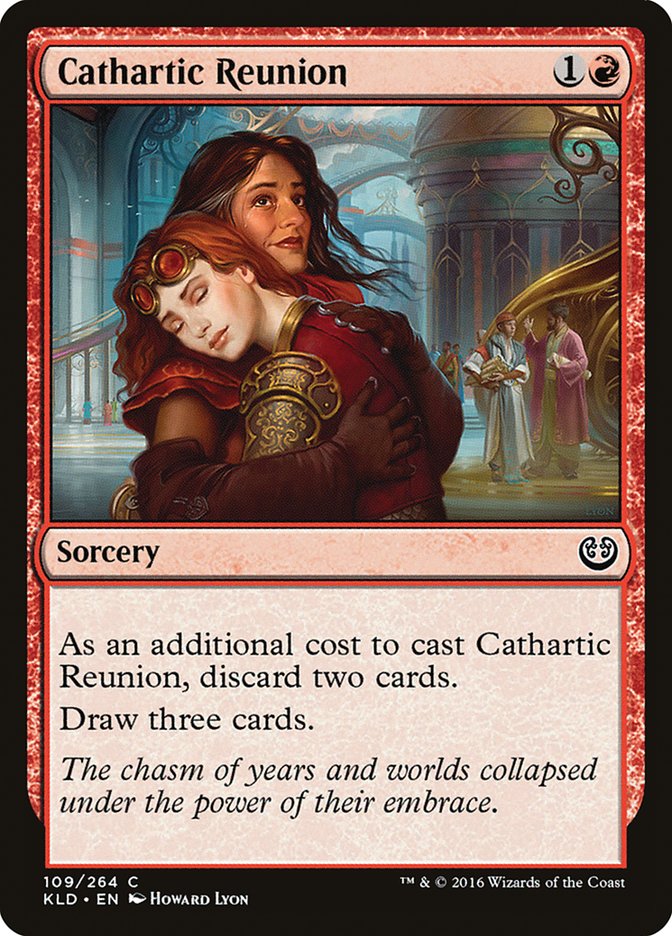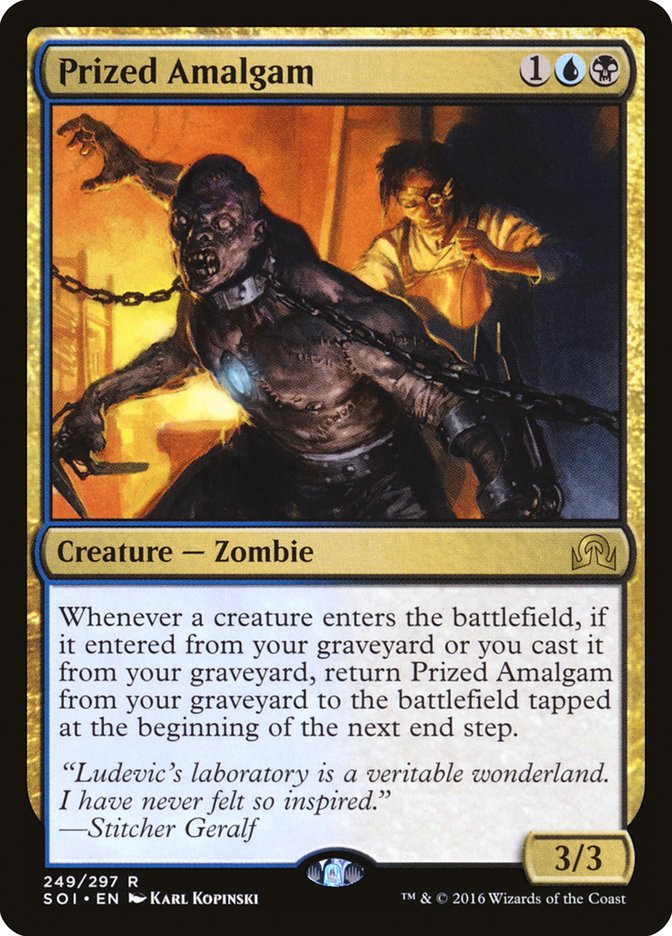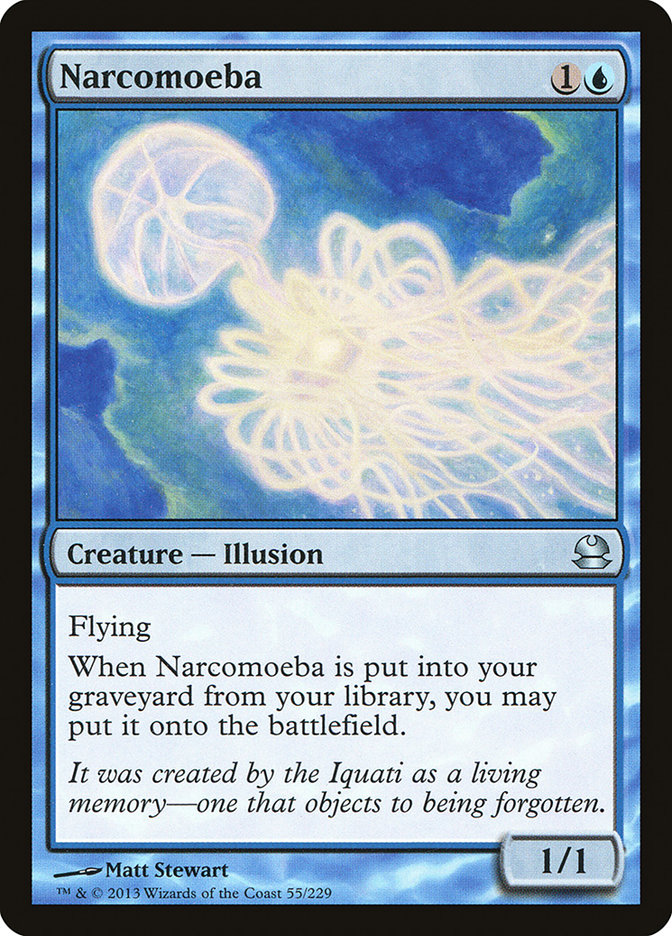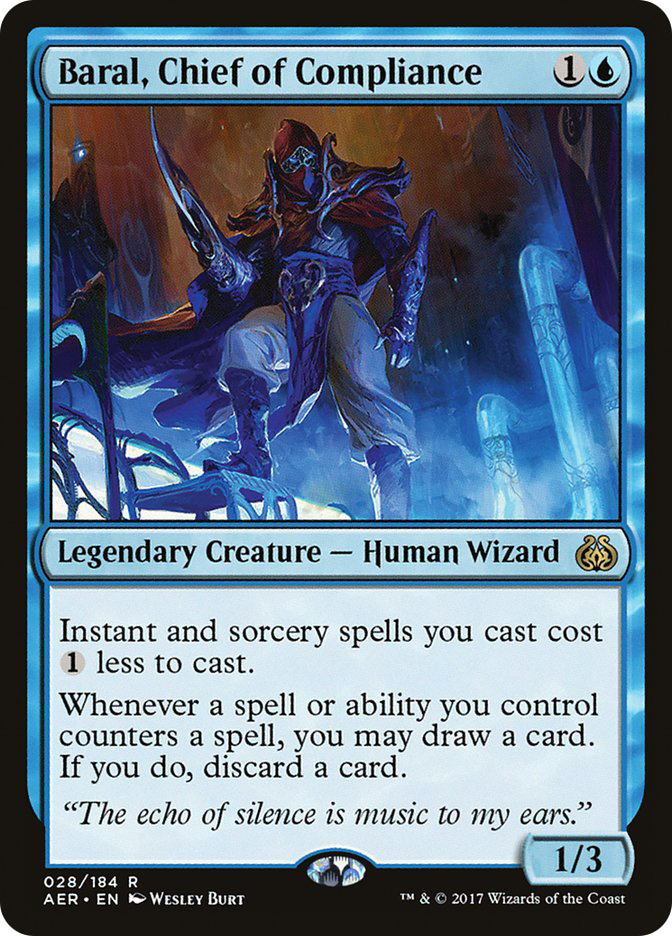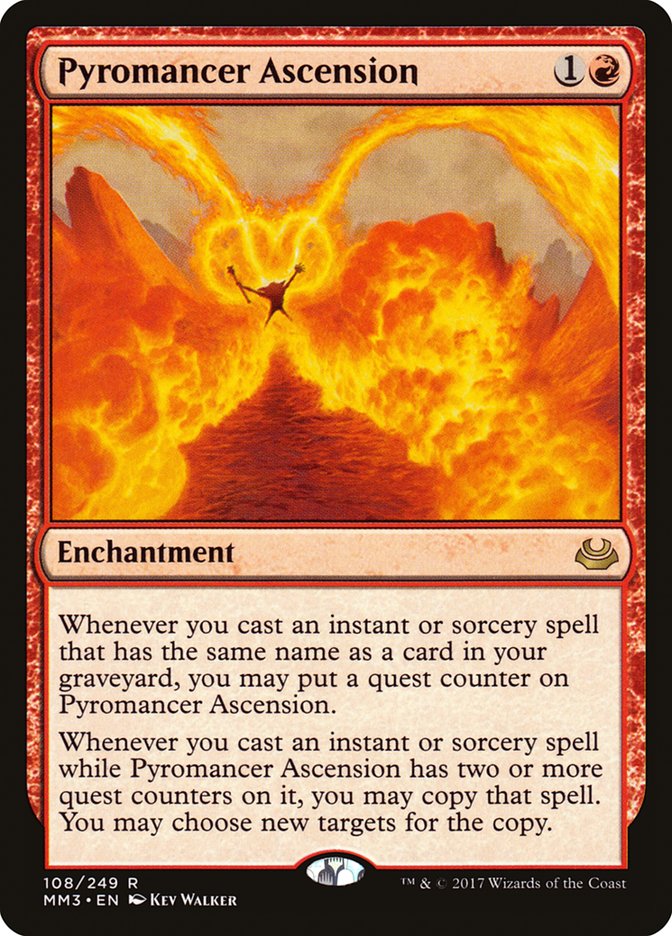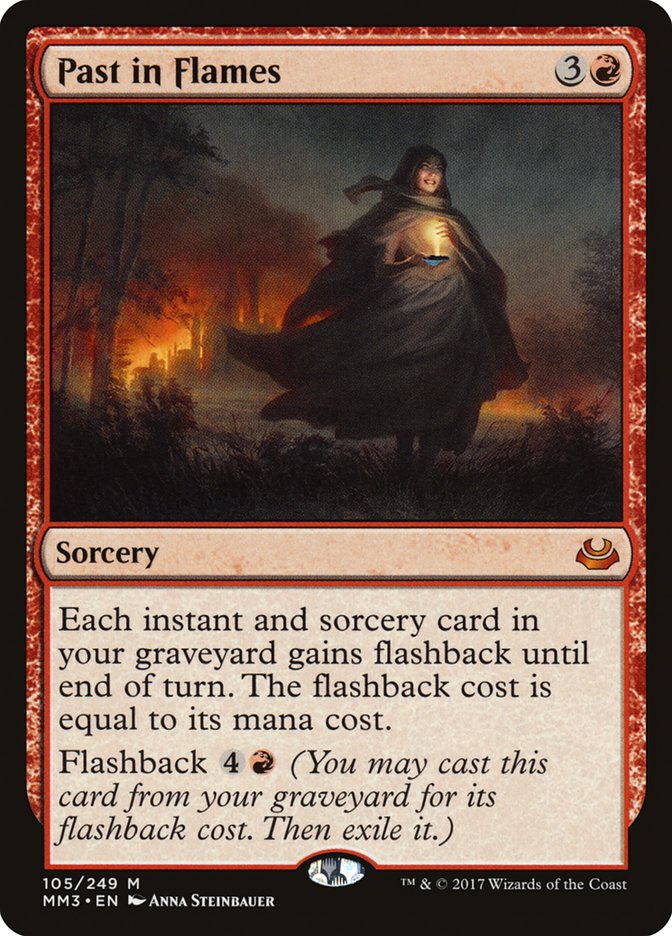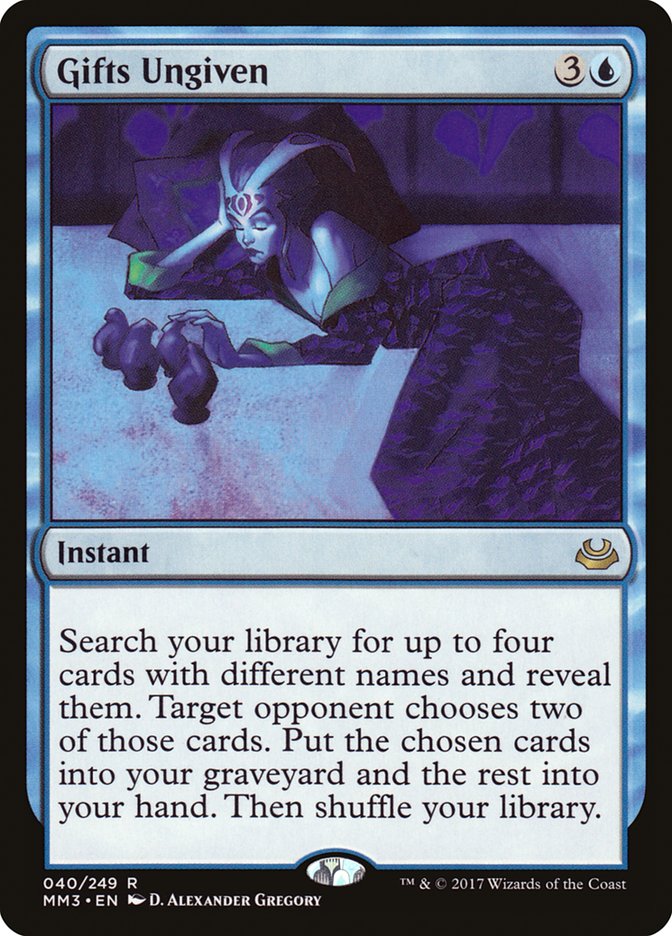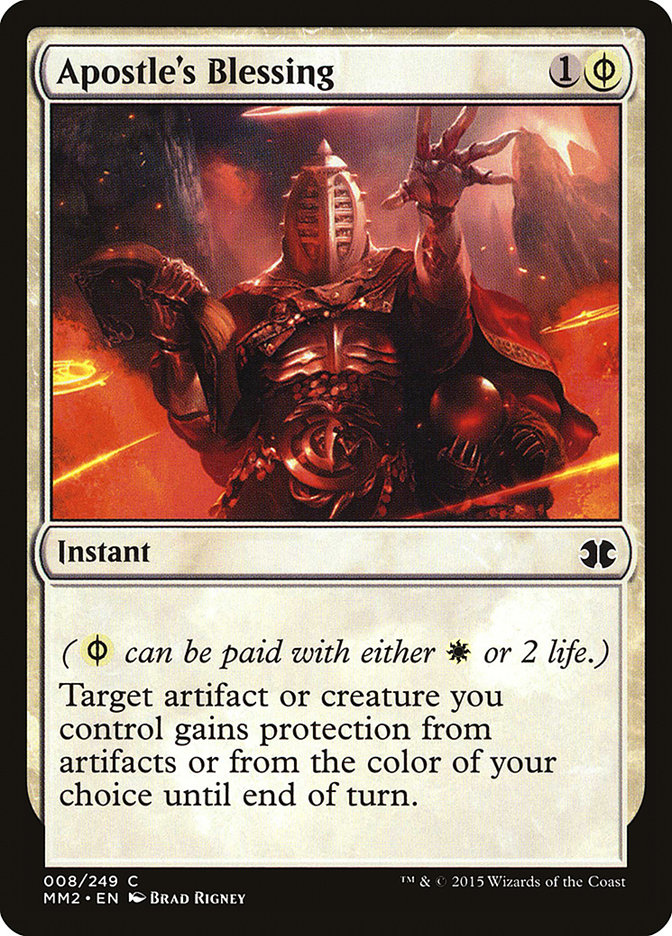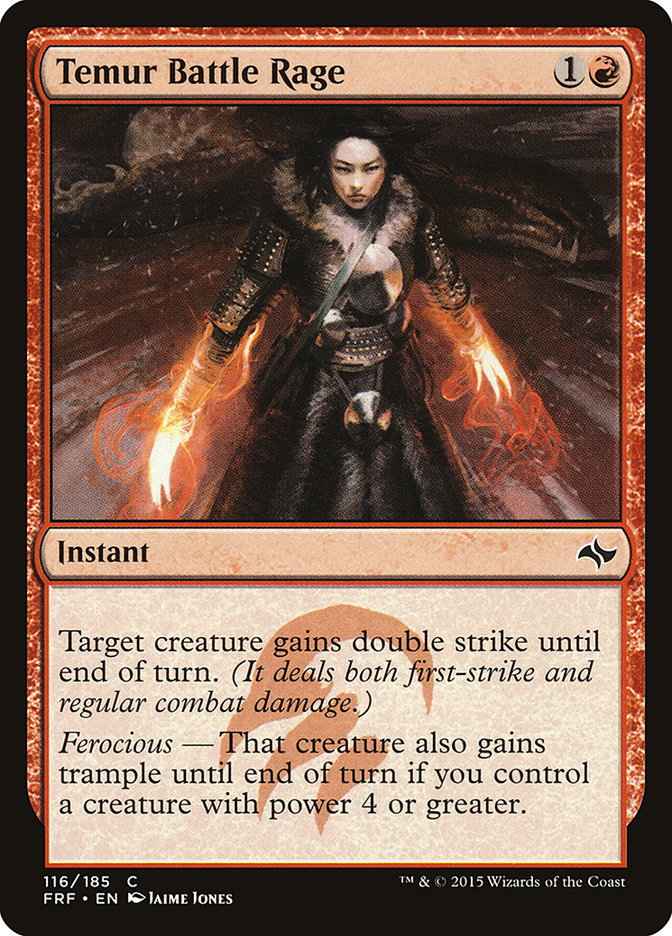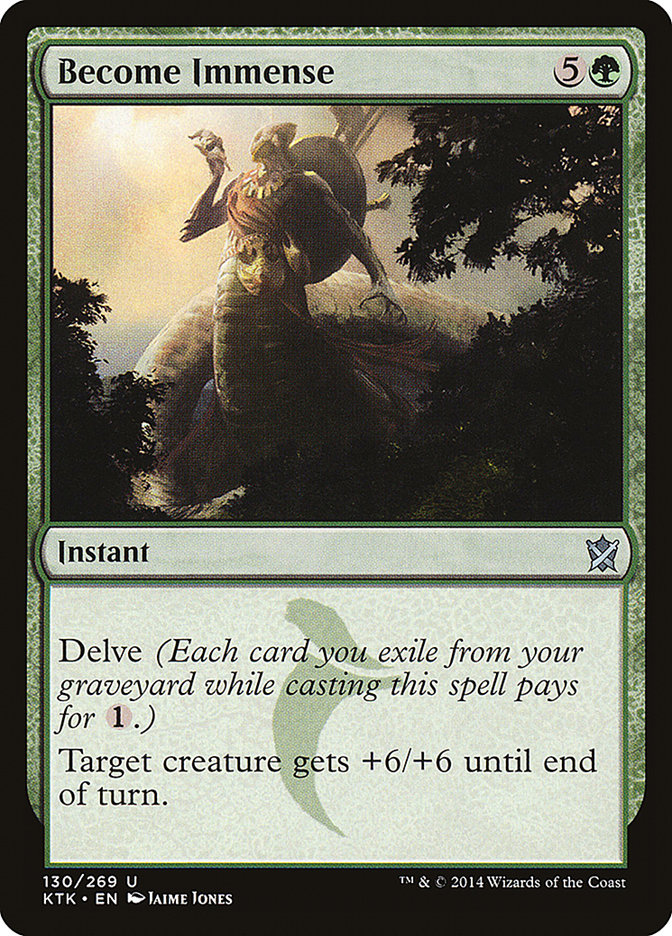#SCGBALT is this weekend, and that means getting back into some Modern after focusing on Standard and Draft for the last month. While I’d feel more comfortable dealing with a format I have plenty of experience with, I can’t say I’m unhappy about the change of pace. Standard seems once again to be under the control of Aetherworks Marvel, so the diversity of Modern is quite welcome.
As such, I want to take some time to share with you what’s running through my head about this weekend, and which decks I am most likely to play.
My default option is always Dredge. I had some success with the deck last year. Despite the Golgari Grave-Troll ban, the deck remains quite powerful and has the tools to fight through the hate that exists in the format.
But when you’re trying to play unfair, the real goal should be to find a deck for which there is little to no hate being commonly played. Combo decks are great at winning Game 1s against unprepared opponents, and the best way to win post-sideboard games is for them to play out in a similar fashion. A lot of people like to extol the virtues of working hard, and for good reason. But if you work smart, then you don’t have to work nearly as hard, and that’s where I want to be.
Frankly, winning post-sideboard games with Dredge is a slog. During my brief run with the deck, graveyard hate wasn’t that prominent in Modern and hate cards like Grafdigger’s Cage that turned out to be the worst in the matchup were more common than Nihil Spellbomb, Ravenous Trap, and Rest in Peace. The prospect of winning through a piece of hate or simply getting a free post-sideboard game where your opponent didn’t draw one was high. It was a better time.
But these days, players are prepared. Graveyard hate is not only necessary against Dredge but quite effective against the various flavors of Death’s Shadow Aggro, further incentivizing players to pack their sideboards and come prepared.
With the re-emergence of Collected Company decks potentially comboing with Kitchen Finks, those incentives aren’t going away anytime soon.
Dredge is powerful and resilient enough to remain a good deck in a hateful metagame, but no one should settle for good. And by the looks of things, there seems to be a better option for players looking to play unfair in Modern right now. And it’s perhaps the most unlikely of them all:
Creatures (7)
Lands (18)
Spells (35)
- 4 Sleight of Hand
- 4 Serum Visions
- 4 Gifts Ungiven
- 4 Desperate Ritual
- 4 Remand
- 3 Grapeshot
- 4 Manamorphose
- 4 Pyretic Ritual
- 3 Apostle's Blessing
- 1 Past in Flames
Sideboard

Storm has been somewhat of a whipping boy in Modern. In the format’s early days, it had access to Ponder, Preordain, and Rite of Flame and was one of the primary offenders at Pro Tour Philadelphia, affectionately termed Pro Tour Goldfish by those of us who had to suffer through an obviously broken format.
Banning those combo enablers left the deck severely weakened, but it stuck around on the fringe of the format until Seething Song was surprisingly banned during the following year. Goblin Electromancer was enough to carry the deck to prominence at Pro Tour Born of the Gods, but it never achieved anything close to its initial status over the long term.
Already a fringe deck, Storm seemed to be a low-key loser from the banning of Gitaxian Probe, as the free cantrip has been a staple of Storm decks in all formats since its printing. Despite that major loss, the deck is currently among the best-performing decks in Modern over the last month. As of my writing this, MTG Goldfish’s online metagame data has it in a dead heat with Affinity for the highest metagame share in Modern, a feat that is nothing less than remarkable.
I have two potential explanations for why Storm is emerging as a Tier 1 deck: the refocusing on the deck around Baral, Chief of Compliance and the removal of some of its natural predators from the metagame.
There’s a New Chief in Town
Those of you who have played Modern for years may notice how different the above list of Storm is from the previous iterations of the deck, as exemplified below by Chris Fennell’s Top 8 list from Pro Tour Born of the Gods:
Creatures (3)
Lands (18)
Spells (39)
- 2 Lightning Bolt
- 4 Sleight of Hand
- 4 Serum Visions
- 4 Desperate Ritual
- 3 Grapeshot
- 4 Manamorphose
- 4 Pyromancer Ascension
- 4 Pyretic Ritual
- 4 Gitaxian Probe
- 3 Past in Flames
- 3 Faithless Looting
Sideboard

Chris’s list has Goblin Electromancer as a tool but is primarily concerned with turning on Pyromancer Ascension to supersize all its spells. Ascension as a tool was key to the deck because it both facilitated fast kills and served as a potential card advantage engine in a long game, providing some much-needed resilience, especially against discard spells.
Between Pyromancer Ascension and three copies of Past in Flames, the deck was quite reliant on its graveyard, which, as I noted earlier, is a crowded and thus dangerous place to be in the current Modern metagame. Pyromancer Ascension runs straight into the Rest in Peaces and Nihil Spellbombs everyone is playing already, so the deck needed to move past that stage and occupy a new space.
The newer list from Andrew Shrout accomplishes that by refocusing the deck behind the power of Baral, Chief of Compliance and Goblin Electromancer. Storm decks have historically gained virtual card advantage from being completely creatureless, thereby rendering all of their opponent’s removal irrelevant. Goblin Electromancer was powerful enough to merit space in the deck even though it often turned on opposing removal, thus turning into a liability.
The redundancy of this effect provided by Baral, Chief of Compliance allows you to more often play through a removal spell or two, limiting the liability of including creatures in a spell-based deck as well as providing consistent enough access to the effect that you can build a gameplan around them.
That gameplan is, of course, Gifts Ungiven. It curves nicely as a three-mana follow-up to a turn 2 creature and synergizes perfectly with Past in Flames to serve as a one-card combo. Typically you’ll find your now singleton Past in Flames and a bunch of fast mana cards, and the Flashback on Past in Flames means you’ll be set to cast all of them on the following turn, hopefully followed by a lethal Grapeshot. It’s a surprisingly simple plan for a mechanic that is known for generating intricate decks, and that’s what makes it so effective.
At this point you might question the efficacy of Past in Flames as a card that relies on the graveyard when the point of cutting Pyromancer Ascension was to dodge such hate, but that’s where the real beauty of the deck comes through. Plan A does involve using the graveyard, thus incentivizing your opponents to bring in their hate, but the deck is no longer reliant on the graveyard to anywhere near the degree it once was. Gifts Ungiven is a flexible enough card that you can use it to generate card advantage while building toward a natural kill with a Grapeshot or two, and in your sideboard you have the option to bring in Empty the Warrens as another non-graveyard win condition.
It is now your opponent who is forced to make the tough decisions. They can bring in graveyard hate and have it be ineffective or leave it out and be forced to answer Past in Flames with conventional means, which is quite difficult. Similarly, they can have a few clunky answers to Empty the Warrens like Maelstrom Pulse, Engineered Explosives, or Anger of the Gods, only to watch you win with Grapeshot. The new list has more angles of attack and thus positions itself to come out ahead in the threat-answer paradigm.
Shrout’s list goes one step further to cement the deck as built around creatures by maindecking several copies of Apostle’s Blessing, which can protect your Baral or Goblin Electromancer for zero mana spent, even against Abrupt Decay. There was always some tension as to whether or not to run out the creature on turn 2 or wait until your opponent taps out so you can cast the creature and immediately use it to facilitate a combo turn. The desire to enable Gifts Ungiven means you have to be able to play a creature on turn 2, and now you can do so safely much of the time. Storm has lost a lot over the years, but it has also added a lot, and it appears that the net effect has been positive.
Addition by Subtraction
I’ve been around long enough that I’ve seen it happen many times. A deck loses a key card and everyone writes it off, only for it to adapt and thrive once the dust settles. We as a community are quick to look at the primary impact of significant format changes. If a deck gains a powerful new tool, it should get better, and vice versa.
Yet secondary ones may be no less important than primary ones. A deck may become less powerful in an absolute sense, but if several decks that beat it also get worse, then the resulting metagame could be much friendlier, counteracting the negative effect of losing a card or two. Magic is all about evaluating cards and decks in the proper context, and all too often we fail to do so to our own peril.
For Storm, the banning of Gitaxian Probe may have quietly been a significant boon. Gitaxian Probe was a great cheap cantrip for a spell-based deck, but it also enabled several other powerful combo decks, notably Infect and the combo-oriented Death’s Shadow decks with the full four copies of Temur Battle Rage and Become Immense. Neither of these decks shows up anymore, with the former having fallen out of the format and the latter being repurposed as a powerful but decidedly fair deck.
Both decks were faster than Storm and thus favored in the matchup. Moreover, their presence forced the rest of the metagame to speed up, naturally preparing them for their own matchups against Storm. Since the winter’s banning, Modern has slowed down considerably, leaving Storm as one of the fastest decks in the format when it already had the resilience necessary to compete with heavy disruption from discard and counterspells.
I’ll have to overcome my inexperience with Storm in Modern if I want to play it this weekend, although having Dredge as a backup leaves me in a good place regardless. More importantly, I want to implore all of you who will be attending #SCGBALT this weekend or playing Modern elsewhere not to underestimate Storm while focusing on Death’s Shadow, Dredge, and Affinity. Combo decks of all kinds thrive on their opponents being underprepared and overconfident. Storm is particularly infamous for being difficult to play against, since there is often one key card in the sequence you need to answer but that card changes from game to game, and you don’t have the perfect information crutch of Gitaxian Probe to rely on anymore.
To be honest, I’m really excited to see a return of Storm to Modern, and not just because I’ve enjoyed playing the deck in Legacy. It’s because of Sleight of Hand. You see, the Portal Second Age printing of the card has fantastic art and I’ve owned a playset forever with little prospect of playing with them.
Yep, I’m a professional.


